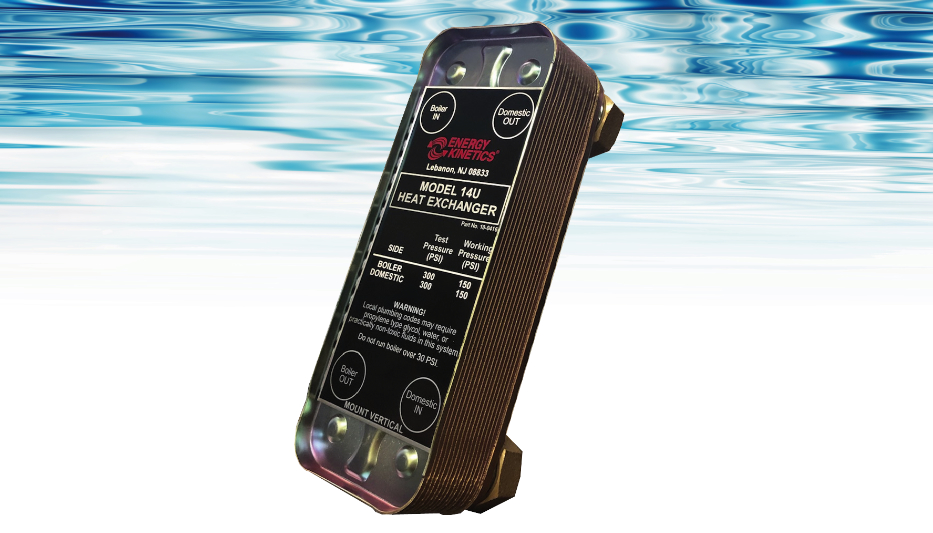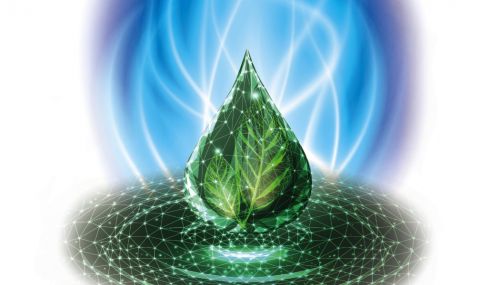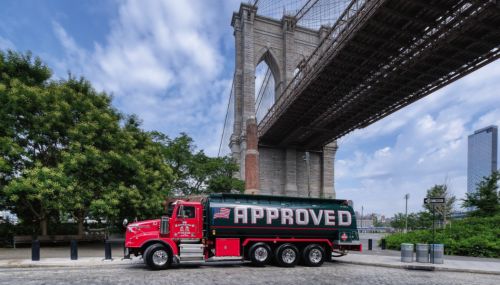All
Hot Water Technology Thrives at Home
by Jay McCay, Energy Kinetics

New advancements help reduce water quality issues and extend pool heating season
The liquid heating fuel industry has always been about delivering comfort, and with more people staying at home, that mission is now more important than ever.
Since last year’s lockdowns, an unprecedented number of people have transitioned to working and learning remotely, and many of them are now more in tune with their home comfort. That sentiment is amplified with far fewer people traveling on vacations. As a result, many homeowners have moved from “doing things” to “buying things.” Suddenly, home improvements that consumers might have put off for years have shifted to the forefront of their priorities. Plus, many of these homeowners are willing to spend more to achieve their desired end results.
Just as the desire for a more comfortable home has driven greater investments in air conditioning and home heating, an increasing demand for security has helped boost backup generator sales. Hot water has also received a great deal of attention as homeowners look to relax and improve their quality of life. For residents of higher end homes, extending the pool and spa heating season falls right in line with those desires.
With these trends in mind, let’s consider some new technologies that support better solutions to deliver on our industry’s comfort promise.
Reducing Water Quality Issues
Longer showers, more frequent laundry and dish washing cycles, and extended pool/spa heating use have created a demand for virtually endless hot water. At the same time, quieter operation is now more important than ever, as many basements — which are typically where heating systems are located — have been converted into home office space. Amid these disruptions, more robust and simpler technologies have arrived to deliver better long-term performance despite more challenging water conditions.
Plate heat exchangers are an example of hot water technology that can offer improved comfort solutions. These heat exchangers isolate boiler water from domestic hot water and can operate at close to 100-percent efficiency to convert nearly the entire output of the boiler into domestic hot water. Plate heat exchangers’ performance has been proven through millions of boiler installations worldwide, but like all water heating methods, they can be adversely impacted by minerals and hard water conditions.
Minerals like calcium and magnesium are “inversely soluble,” meaning they have less solubility in warm water; mineral buildup is localized to the surface where domestic water is heated. Most other compounds, like sugar and salt, are the opposite and dissolve more easily with warmer water. The risk of scaling is sometimes underestimated since it is a continuous process that occurs over time, but if severe enough, it can eventually lead to clogging and require a plate heat exchanger or tankless coil to be cleaned or replaced. Acidic water or mineral content that creates highly conductive water can effectively turn a tank or hot water system into a weak battery, leading to corrosion.
The challenges of hard water fouling and corrosion are both well addressed with Energy Kinetics’ SealixTM silicon dioxide (SiO2) coated plate heat exchangers. This feature was introduced in December 2020. The Sealix coating is a unique problem solver because it’s bonded to the stainless steel plate heat exchanger, creating a non-stick barrier against fouling, scaling, and corrosion, which is durable even under extreme temperatures and pressures. Minerals can plate out where domestic water is heated, but because they don’t stick to the surface, they flake off instead of accumulating. In fact, silicon dioxide coating is so effective it is used in high-tech nuclear, medical, and industrial applications dealing with acids and other corrosive chemicals. The Sealix coating is ideal for preventing corrosion even in salt and chlorine pool heating applications (more about these in the next section).
Sealix heat exchangers are used on the chimney vented AscentTM Combi and polypropylene vented Ascent Plus Combi boilers. This allows the boilers to operate with long-term reliability in a wide range of water conditions. Because of the high heat transfer rate of the plate heat exchangers, these boilers can produce much more hot water while operating at a lower temperature than tankless coil boilers. The lower operating temperature also reduces the rate at which hard water minerals accumulate.
Hard water problems can also be minimized or eliminated with a Scale Stopper, although field performance is better with plate heat exchangers than with tankless coils that maintain very high temperatures year-round. A Sealix coating complemented by a Scale Stopper makes for a very powerful combination without the need for a full water treatment system. This is especially important for homeowners who may have health concerns about full water treatment systems. High-silt applications may incorporate a simple whole-house filter to deliver silt-free water to every fixture.
Another way to deliver more hot water is with an indirect hot water tank or a storage tank system with a plate heat exchanger. Sealix heat exchangers couple well with any existing boiler using a glass lined tank. This allows the aquastat to be turned down to save energy while simultaneously delivering more hot water. Thermoplastic tanks like the Energy Kinetics High Flow Tank also offer indirect and storage options that are nearly impervious to corrosion. These tanks have gained in market share in the past few years, and there is no anode rod or routine cleaning maintenance required. Indirect tanks with coils do remain subject to domestic side fouling from elevated hard water conditions, so a Scale Stopper is recommended for these units.

Extending Pool Heating Season
Since the start of the pandemic, Joe Crooks of Superior Pool and Patio in Philadelphia has seen nonstop interest in pools and pool heaters. His installation appointments are now fully booked through the end of 2022.
“Because more people are staying home, there’s an increased interest in lengthening the pool and spa heating season by weeks or months,” Crooks says. “We’ve used stainless steel heat exchangers for years, and now Sealix provides an even better solution, even with today’s salt water pools. They use the excess boiler capacity available in the spring, summer, and fall, which is perfect for extending and more fully enjoying the pool and spa season. They’re easy to add to an existing boiler, which saves on installation time and costs.”
The Energy Kinetics Smart Pool heater has a Sealix plate heat exchange rated for up to 300,000 BTU/hour. When coupled with a 150,000 BTU/hour output boiler, the heater can raise the temperature of a 30,000 gallon pool from 65 degrees F up to 80 degrees F in just over a day (with a solar cover to prevent pool surface heat loss in cooler weather). The Smart Pool Heater must be located outside of the building. “Sod can be replaced after trenching and burying polyethylene pipe connected to the pool pump and filter for a very clean looking installation that my customers really appreciate,” Crooks adds.
All of these options build on existing technology and offer more robust solutions than ever before available. With homeowners keenly focused on enhancing their home comfort, they will appreciate being able to rely on these innovations for years to come.
Jay McCay is National Sales Manager at heating equipment manufacturer Energy Kinetics. He can be reached at 908-328-7154 or jmccay@energykinetics.com.
Related Posts
 From Blue Flame to Biofuels
From Blue Flame to Biofuels
Posted on June 25, 2025
 HEAT Show Announces Fenway Park Backyard BBQ
HEAT Show Announces Fenway Park Backyard BBQ
Posted on May 15, 2025
 Delivering New York City’s Clean Energy Solutions
Delivering New York City’s Clean Energy Solutions
Posted on May 14, 2025
 Are You a Leader or a Boss? The Choice is Yours
Are You a Leader or a Boss? The Choice is Yours
Posted on May 14, 2025
Enter your email to receive important news and article updates.
